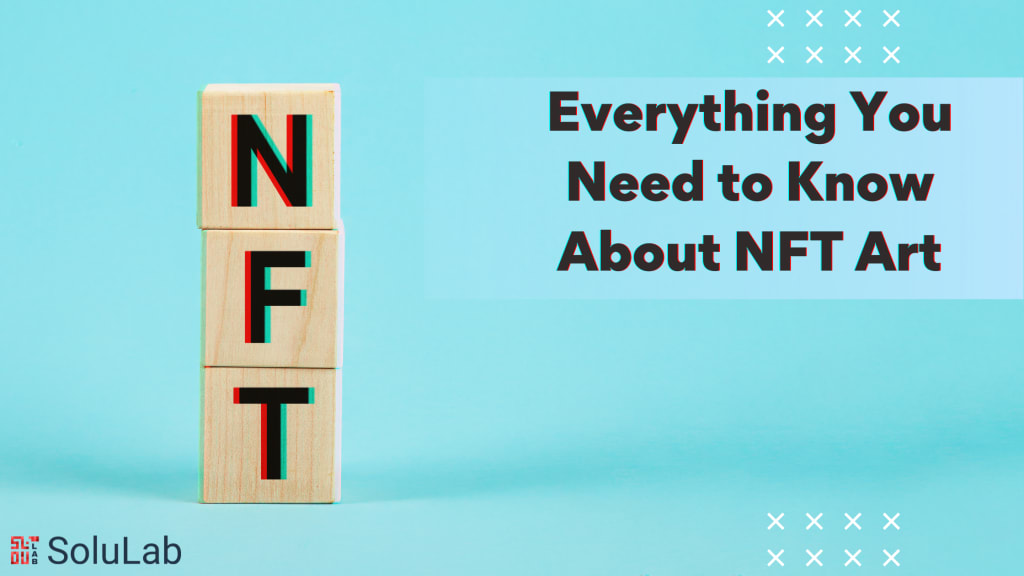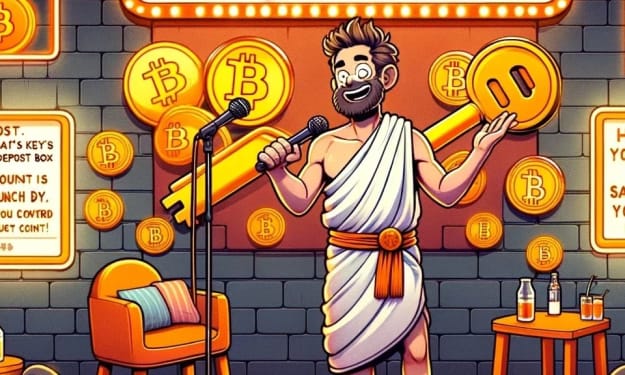Everything You Need to Know About NFT Art
Let's face it: NFTs, or non-fungible tokens, are revolutionising every aspect of contemporary society, from finance to the arts. And there is every reason for us to believe it won't end there.

NFTs have emerged as one of the most significant and durable modern developments in software, economics, style, sports, meme, and art. NFTs have been associated with hype, misunderstanding, and controversy, these reactions are also signs of a paradigm change. Here, we go in-depth on everything you need to know about the NFT art.
Understanding NFTs and everything going on in the field can be difficult, as with any new technology. But don't worry; we're here to help you understand what NFTs are, how they're created and sole, the different advantages and disadvantages, and how to decide if NFTs are the correct choice for you.
What is NFT?
As a starting point, a non-fungible token (NFT) is a distinct data unit on a blockchain that can be linked to both virtual and physical items to offer an irrevocable proof of ownership.An NFT's data can be linked to digital photos, music, videos, characters, and other content. They can also be utilised to grant an NFT owner access to a variety of tangible assets, including vehicles, yachts, and much more, as well as tickets to live or virtual events.
In this approach, NFTs enable anyone to quickly verify the creation, purchase, and sale using blockchain technology. However, keep in mind that when you purchase an NFT, you are not, unless specifically indicated, purchasing the copyright, intellectual property rights, or commercial rights to any underlying assets.
The procedure of producing and selling NFTs is actually quite straightforward. It operates as follows:
- A person (or company) chooses a special asset to sell as an NFT.
- They "mint" the object, which produces the NFT, and add it to a blockchain that supports NFTs.
- Now the item is represented by the NFT on the blockchain, ownership proof is confirmed in an unchangeable record.
- The NFT can be purchased, sold, and exchanged utilising NFT crypto art marketplaces and auctions, or it can be retained as a part of a private collection.
As you might imagine, the technical definition is a bit more convoluted. If you’re
How are NFTs different from cryptocurrency?
Cryptocurrency is what you use for all blockchain transactions, just like the money in your bank account. Through cryptocurrency exchanges, one can buy cryptocurrency or turn it into fiat money (such as dollars, euros, yen, etc.).
An NFT, on the other hand, is a one-of-a-kind, irreplaceable asset that is bought using cryptocurrency. Like a well-known trading card or a one-of-a-kind work of art, it can increase in value or decrease in value regardless of the currency used to purchase it.
In this respect, NFTs are non-fungible and cryptocurrencies are fungible.
It makes sense to think of conventional fiat currencies in order to comprehend this better. You wouldn't open your wallet and ask, "Which dollar bill do you want?" if we asked you to lend us a dollar. As each $1 bill stands for the same thing and can be exchanged for any other $1 bill, doing so would be absurd. This is due to the fungibility of the US currency. Equally fungible are cryptocurrencies. They are not special and are simply replaceable and traded.
NFTs, on the other hand, are unique in that they are non-fungible. Because there is no identical version, each NFT is a distinct unit of data that cannot be replaced.
NFTs' distinctiveness and scarcity raise their allure and desirability. Like with all uncommon items, this scarcity enables people to sell their NFTs for a premium.
Creating, buying, and selling NFTs
Unfortunately, entering the NFT market is more difficult than it first appears. After example, you can't exactly spend a dollar to purchase an NFT and then take it home. When you buy (or mint) your own NFTs, you'll need cryptocurrency to fund the transaction and a crypto wallet to keep the data securely. And that's only the start. So, if you’re wondering how you can get started with NFTs, you can check out our detail section on 6 Steps to Create and Sell NFT art where we have talked about how NFTs are created, traded, stored, and managed.
Does the NFT art industry have longevity?
Well, we're not really sure. Despite a 70% decline in April, it doesn't seem likely that NFT art will run out of steam anytime soon given its enormous potential. Personally, We don't think this is a fad; We think we've been moving toward a predominantly digital age for the past ten years, and this is just the next transition to get used to. If you are a graphic designer and generate all of your work digitally, the most of it is made and ready for printing, so skipping the NFT feels like a bit of a missed opportunity.
NFT usage and ownership rights
NFTs and the assets linked to them have a complex connection. The NFT itself is viewed as a different entity from any content it includes, despite the fact that it is intended to represent the original asset on the blockchain. Trading cards and NFTs have frequently been contrasted in this article; the comparison still remains true in this instance.
For example, let's say you have a popular trading card from a collectible card game like Magic: The Gathering or an old baseball card. You don't actually own the original piece; you just own a representation of it. Your card's manufacturer is the sole owner of the copyright of the artwork, design, and branding of your particular card. Similar to how NFTs represent an object on the blockchain, owning an NFT does not give you ownership of that item's intellectual property or usage rights.
Let's say, for instance, that you purchase an NFT that includes the first-ever digital version of Harry Potter and the Sorcerer's Stone. NFT belongs to you. However, that does not imply that you have the right to publish Harry Potter books, create Harry Potter films, or authorise others to utilise the Harry Potter IP for profit.
Unfortunately, NFT ownership and usage rights are frequently confused, leading to some buyers buying NFTs on the false assumption that an NFT effectively grants them the right to develop upon (and profit from) well-established IPs.
These absolute norms do, of course, have some exceptions. All NFT proprietors of the Bored Ape Yacht Club have been publicly acknowledged as having full commercial rights to that Ape. It can be made money in whatever way the NFT owner deems fit. Some initiatives, like CrypToadz and Nouns, have gone even further by making their intellectual property available to the public domain via Creative Commons (known as CC0). But they ought to be seen as the exception rather than the rule.
Copyrighted content
Any user can mint a new NFT using copyrighted content that they don't own by using self-minting systems like OpenSea. Several factors make this hazardous for the minter, customers, and the original artist:
- Sellers and buyers put themselves at risk of legal action by the legitimate copyright holders by making money off of illegal content.
- Illegal NFTs of the same work may diminish the value of authorised NFTs granted by the copyright holder.
- Customers might not be aware that the content they've bought is illegal or that they've put themselves in danger by engaging in an illegal trade.
One of the reasons verified NFT projects and accounts are preferred is due to concerns about validity. Always check for verified projects on platforms and only follow links from official (and verified) user accounts on social media to stay secure when using NFT markets.
When purchasing NFTs through official websites, such as Art Blocks or NBA Top Shot, customers may shop with assurance knowing that their purchase is authentic.
In the end, it really just boils down to personal preference and the initial motivation for getting engaged. But here's what we can tell you:
NFTs are ideal for hobbyist collectors who want to help an author, participate in a community, or own a small portion of something they're enthusiastic about.
NFTs are a risky investment because of how volatile they are and how speculative the market is. Like fine art and other rare goods, certain NFTs have experienced tremendous value growth while others have experienced tremendous value decline.
It is impossible to overstate how important community is to NFTs. NFTs can be a doorway into a different community and way of life, from the Bored Ape Yacht Club and CryptoPunks to purchasing NFTs from your favourite brand or artist.
NFTs are still in their infancy despite the meteoric rise in popularity we've witnessed in recent years, and it's never too late to start. Without a doubt, you didn't miss the boat.
We hope you enjoy the journey if you decide to join the NFT ecosystem; we know that we have.
About the Creator
Sohail asif
My name is Sohail Asif, a writer with a flair for storytelling! Life-long learner, a researcher, curating every content with my original touch. While I am not researching.






Comments
Sohail asif is not accepting comments at the moment
Want to show your support? Send them a one-off tip.